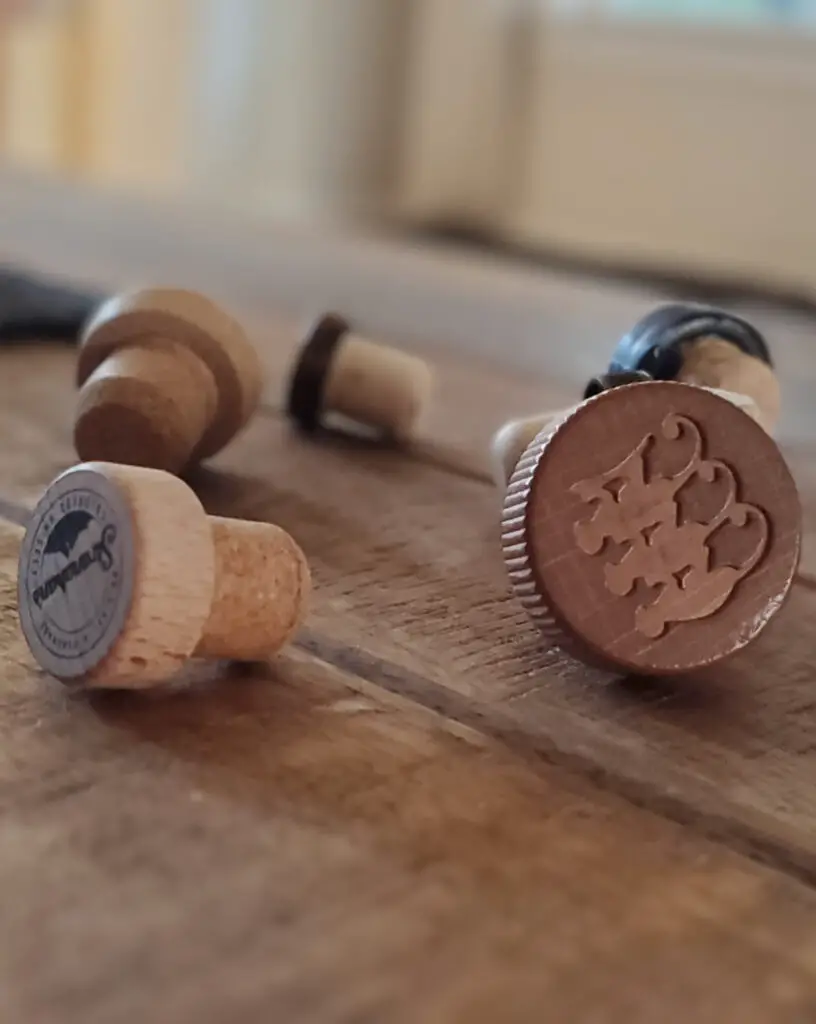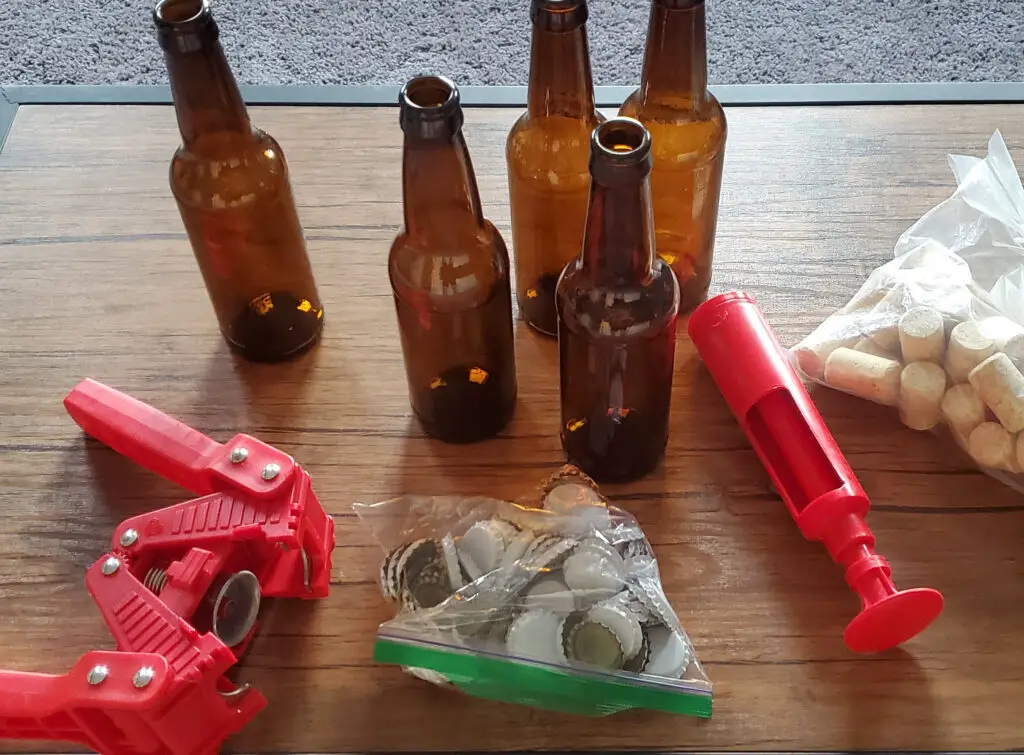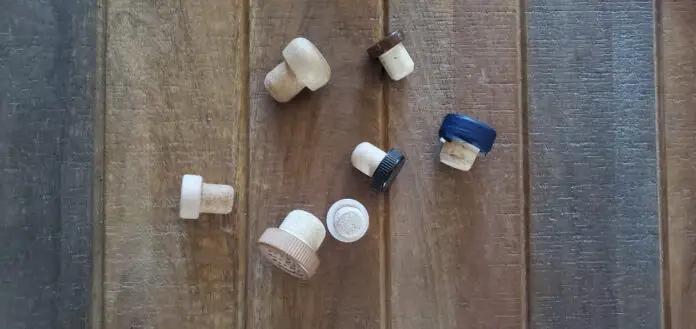For many new brewers, bottling can be a daunting thing. You’ve probably considered alternative options, yourself, at some point in your brewing career, and “T” corks seem to be the obvious solution to the inexperienced brewer. I see it all the time on the various homebrewing subreddits and forums – new brewers asking if they can just use “T” corks, and if not, why not?
Tasting corks (more often referred to as “T” corks) should not be used for bottling mead or wine. “T” corks are not suitable for any bottles that will be stored for a period of time. However, in a pinch, they can be used for bottles that will be served or consumed immediately.
You shouldn’t use T corks for bottling your meads and wines (or anything else, really).
The only caveat (I guess) is for you degenerates over at /r/prisonhooch who plan to drink your product the instant fermentation is complete. If you’re going to finish the entire batch almost as soon as it’s bottled, then T corks can be acceptable (though still not optimal), as you’re not giving the mead or wine a chance to spoil.
I get it – you want T corks to work. They’re so much simpler than proper corks: they’re easy to use, you don’t need any special equipment, and they’re even reusable!
However, the “shortcut” solution is almost always a bad one.
What Are “T” Corks Actually Good For?
So why do T corks exist in the first place if you shouldn’t use them for bottling mead and wine?
There are a few niche situations – not actually bottling a batch – where T corks can be used.
1. “Tastings” or During Consumption
The actual name for “T” corks is “Tasting” corks. It’s what the “T” stands for!
The name tells you what they’re to be used for: tastings! Or, in other words, while you’re drinking – and opening the bottle a lot.

If you open a 750ml bottle of wine or mead for drinking, you probably won’t pour the whole thing for the first glass. In between pours, you want to cap off the bottle to protect the mead or wine from air as best as you can.
This is where “T” corks come in handy! They’re easy to pop in and out for pours, and while they don’t create a good enough seal for storage, you’ll be drinking it now so it doesn’t exactly need to last very long.
It’s what they were designed for. So it’s worth keeping a few around! Or, if you feel inclined, you can get some fancier ones tailored to your interests, like this Clemson-themed one that I own.
2. Very Short-Term Storage – For Bottles to be Consumed Within Days
If you’re going full-on /r/prisonhooch, you may not need or want anything more than “T” corks.
For some degenerates (and I say that affectionately), the goal isn’t to optimize your process, have patience, create a very fine product, and age it to perfection.
For some, the goal is to produce something that will get you drunk as quickly, cheaply, and easily as possible.
If this is you, you might not be planning on letting your batch sit in bottles for very long. In fact, you might be bottling it as soon as fermentation is complete, with the intention of drinking the entire batch at a party or event later that same week!
If that’s the case, then you probably don’t necessarily need to be worried about spoilage in such a short time period.
Using actual corks or bottle caps would be better, since there would likely be a little bit of spoilage or oxidation in even just a few days, but it’s probably not a huge deal. In fact, if you’re not giving your brew time to rest and age, the undesirable characteristics of a young mead or wine will likely mask or overpower any sign of oxidation.
3. High-Proof Distilled Products (Liquor)
You’ve probably noticed that most of the liquor you buy is sealed with T corks (unless it’s a cheaper product with a screw cap).
High-proof liquor doesn’t necessarily need to be sealed completely because:
- It’s a product of distillation. Distillation is like the ultimate filtration device: it removes everything except for alcohol, water, and some flavor components. This includes microbes and any chemicals that are reactive with oxygen.
- It’s a very high proof. Once these sources of spoilage and oxidation are removed from the product, they cannot be re-introduced. The very high alcohol content will kill just about any spoilage organism immediately.

Spoilage and oxidation are simply not a concern when high proof and distillation is involved.
Additionally, you’re probably treating your liquor similar to an open bottle of mead or wine: you’re not going to be drinking the entire thing in one gulp! Instead, you’ll be opening and closing it many times over a long period.
Thus, it makes sense to use a “tasting” cork that can be easily removed and replaced every time you want a small dram, rather than using something that needs special equipment, given how many times you’ll be doing it.
There is an argument whether a “T” cork is truly optimal, since with high proof liquor you still need to consider evaporation and how that affects the product, but that is outside of the scope of this article – and maybe even this website!
Why Shouldn’t You Use “T” Corks?
By now we’ve established that you shouldn’t use “T” corks for mead and wine, but that still leaves the question: why?
It’s been touched on already, but in summary: it simply doesn’t create enough of a seal to protect the product inside the bottle for any length of time.
“T” corks are not at all airtight. In fact, they’re not even truly watertight! You’ll see that, with most “T” corks, the listing and/or packaging warns that you should not store bottles sealed with “T” corks on their sides. While the liquid won’t immediately pour out, it will start to seep around the sides of the cork.
And if the liquid can get out, imagine what can get in!
Spoilage organisms are a lesser concern, as they typically can’t crawl through the opening.
However, oxidation is a concern!
If you don’t get an airtight seal, oxygen will get into the brew and spoil it, causing it to oxidize and create bad flavor, or worse, turn it into vinegar. This doesn’t happen immediately… but it will happen if you let it sit in the bottles, sealed with T corks, for a period of time.
What Should You Actually Use for Bottling Mead or Wine?
When bottling your mead or wine, you want to use proper corks or bottle caps.
Proper corks and bottle caps create an actual seal, preserving the mead or wine inside the bottle. With a good seal, you can store the bottles for a much longer time – potentially indefinitely.
(Which one is a better option – corks or caps – is a topic best left for another article)

Unfortunately, the use of proper corks and caps requires special equipment – namely, a corker or capper (depending on which method you’re using to seal the bottle). However, while very nice corkers and cappers that are easier to use can be costly, the cheap ones will do just fine.
In fact, I still use a very cheap option for both corker and capper – this simple plunger corker and this hand capper, both available on Amazon.
If you cannot afford one of these pieces of equipment, or prefer not to use it, another option is to use swing-top bottles, which use a metal hinge to hold the top on tightly. These are not a perfect replacement, and are more pricey than regular bottles (thus are more costly in the long run compared to the one-off cost of a corker or capper), but swing-top bottles will work better than T corks.
If all of these options are too costly, then T corks will do in a pinch. However, you must realize that T corks will not actually preserve the mead or wine, and if you use them, it must be drank almost immediately after bottling.
Conclusion
In summary, do not use T corks to bottle your mead or wine!
They do not create a good enough seal, and they will not preserve your brew for any real length of time.
There are a few caveats, but even if I plan to drink a batch soon after bottling, I still default to doing it the correct way.
Use proper corks or bottle caps, or at the very least, swing-top bottles. If you do so, your brew will only get better with time in the bottle.



